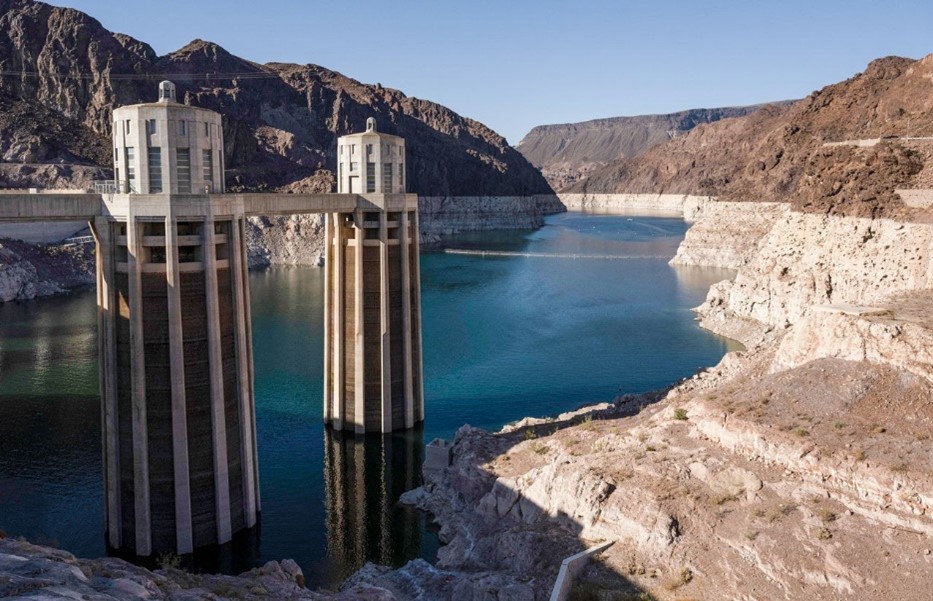The information contained in this article is not intended as legal advice and may no longer be accurate due to changes in the law. Consult NHMA’s legal services or your municipal attorney.
This article will help you learn some steps required to ensure a sustainable supply of clean, safe, and affordable drinking water, continuing a century-old tradition of service that water professionals are proud to provide.
Steps in the public drinking water cycle include source water; collection and treatment; distribution and delivery; monitoring and regulatory reporting; and throughout each step the critical element of customer relations and engagement. Because we all depend on clean, affordable water there are places at each step when you can be part of this vital service – a meaningful way to protect your interests and be part of your community! Let’s get started and learn more about our sources of drinking water supplies.
Step 1 – Source Water (or, we all need something to treat!)
Drinking water starts with a source. Nearly half of New Hampshire residents depend on private wells, with some dug into the ground and most drilled far into the underlying bedrock. Surface water enters the ground and fractured bedrock, moving under influence of gravity and pumping. While the soil acts as a filter that cleans infiltrating rain and snowmelt, both natural (arsenic, radon) and man-made (petroleum compounds, degreasers, and PFAS) contaminants can be present.
Fifty four percent (54%), or roughly 750,000 New Hampshire residents, depend on public drinking water systems that treat source water to exacting health and regulatory standards. Sources include ground water extracted with wells; surface water taken from ponds, rivers, and lakes; and combined sources. Most larger systems and population centers depend on surface water, which often has multiple uses, including recreation, hydropower, and ecological services. While surface water treatment is more complex, rivers and lakes are more productive than most aquifers, and are located near our population centers (coincidence? We think not!).
Merrimack River in Manchester – A history of multiple uses
New Hampshire is blessed with a bounty of clean fresh water, with a few caveats of growing concern:
- Increasing development is reducing infiltration, increasing stormwater runoff, and decreasing water quality.
- While total annual precipitation is fairly steady, climate-driven drought / flood frequencies are increasing, stressing water availability.
- As need for our finite supply of water increases, competing interests will become more challenging.
- Emerging man-made contaminants (such as PFAS) are impacting source waters across the State, reducing their availability, or adding substantial testing and treatment costs.
In addition, infrastructure projects required to protect and access source waters are increasingly expensive and complex, commonly costing millions of dollars and taking years to design, permit, fund, and build.
Most of us have heard about the extended drought in the western US. Lake Mead, which impounds the Colorado River to divert its waters from Nevada to California, provides hydropower to make Las Vegas habitable, and irrigates millions of acres of farmland that produce roughly 40% of our nation’s vegetables. While recent rains are delivering some drought relief along with devastating floods, the continuing downward trend of this critical water source has the potential to reshape our country.
Lake Mead and Hoover Dam water intakes, 2022
After more than a century of affordable, dependable clean water, it is human nature to assume things will remain the same. It takes a special imagination to anticipate major change, and rarefied leadership to prepare a united and effective response.
Being well informed and willing to act for sustainable and dependable drinking water can make the difference for the future of your own community. Land use choices such as protecting riparian buffers, infiltrating stormwater, and preserving open space can protect your water supply and improve the aesthetics of your town. Be a local advocate for water, and you can’t go wrong!
New Hampshire Water Works Association (NHWWA) is a non-profit organization whose mission is to improve public water supply service in the State of New Hampshire. NHWWA represents over 300 municipal and private organizations committed to providing clean, safe, and affordable drinking water to New Hampshire’s residents and businesses.
Learn more about our Association at www.NHWWA.org or contact us at Info@NHWWA.org.

